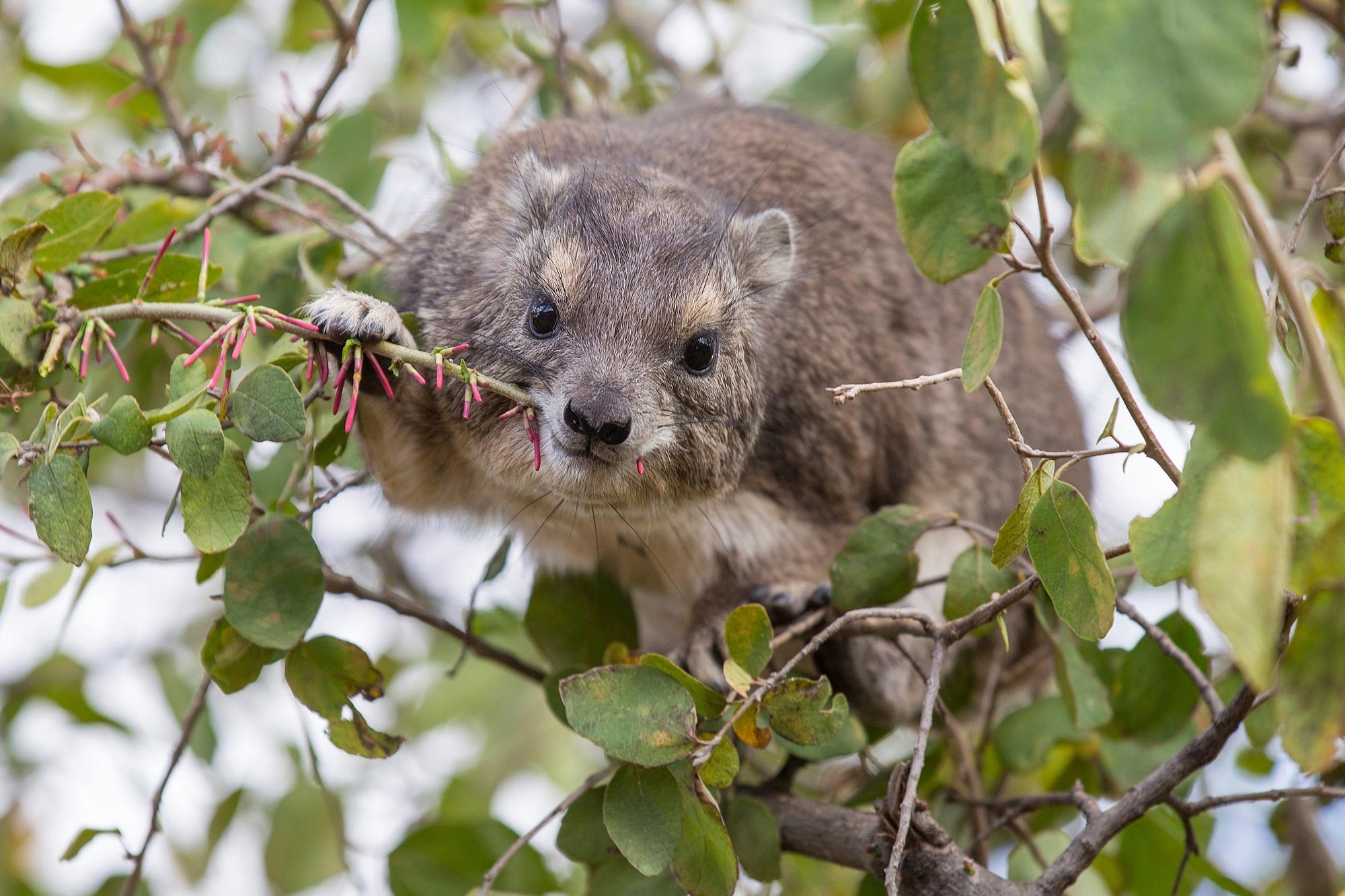Tree Hyraxes in Uganda: A Closer Look at Their Description, Habitat, Reproduction, and Lifespan
Tree Hyraxes in Uganda. Scientifically known as Dendrohyrax arboreus, Tree hyraxes are fascinating creatures that inhabit the lush landscapes of Uganda. These small, arboreal mammals belong to the family Procaviidae and are often referred to as tree dassies. Let’s delve into the intricate details of tree hyraxes, exploring their physical characteristics, habitat preferences, reproductive behaviors, and lifespan.
Description:
Tree hyraxes are compact animals with a robust body and a rounded head. They possess dense, coarse fur that ranges in color from grayish-brown to reddish-brown, providing effective camouflage within their arboreal environment. Their large eyes and rounded ears contribute to their keen sense of hearing and sight. Additionally, tree hyraxes have sturdy limbs equipped with strong claws, ideal for climbing trees and navigating their elevated habitats.
Habitat:
These remarkable creatures primarily inhabit montane and lowland forests, preferring areas with dense vegetation that offers an abundance of trees and rocks; Uganda’s diverse landscape provides an ideal environment for tree hyraxes, allowing them to thrive in regions such as Bwindi Impenetrable Forest, Kibale National Park, and Semliki Wildlife Reserve.
Reproduction:
Tree hyraxes have a unique reproductive system, and females typically give birth to a single offspring after a gestation period of about seven to eight months; Young hyraxes, called pups, are precocial, meaning they are born with their eyes open and are capable of climbing shortly after birth. Mothers provide care and protection to their offspring, often seeking refuge in tree crevices or rock formations.
The social structure of tree hyraxes is characterized by small family groups, typically consisting of a dominant male, several females, and their offspring. These groups exhibit cooperative behaviors, such as grooming and vocalizations, fostering a sense of community within their treetop homes.
Lifespan:
The lifespan of tree hyraxes in the wild is estimated to be around 7 to 10 years, although factors such as predation, habitat conditions, and human activities can influence their longevity; In captivity, where they are sometimes kept in zoos or wildlife reserves, tree hyraxes may live slightly longer due to the absence of natural predators and access to consistent food sources.
Conservation Status:
While tree hyraxes are not currently considered endangered, their populations face potential threats from habitat loss, deforestation, and human encroachment. Conservation efforts in Uganda and other regions are crucial for preserving their natural habitats and ensuring the continued existence of these captivating creatures.
Conclusion: – Tree Hyraxes in Uganda
Tree hyraxes in Uganda are remarkable creatures that have adapted to life in the treetops of dense forests. Their unique characteristics, habitat preferences, reproductive behaviors, and lifespan contribute to the rich biodiversity of Uganda’s ecosystems. As we strive to protect and conserve these habitats, we play a vital role in safeguarding the future of tree hyraxes and the many other species that call these environments home.








